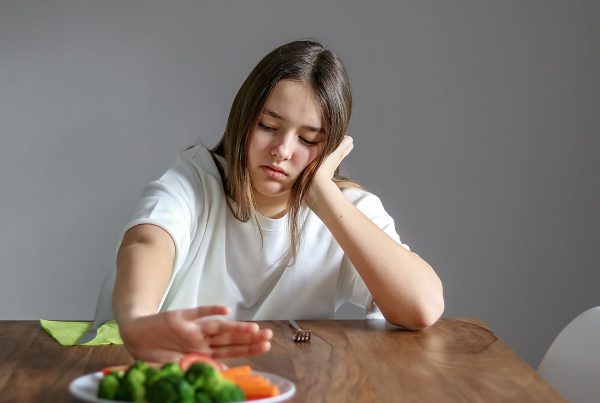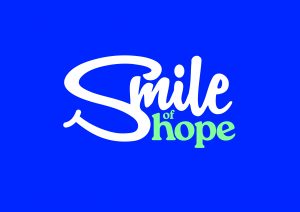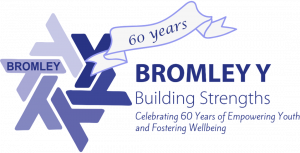
Last Updated on October 9, 2025 | Published: October 9, 2025 published by Jenny Tomei
Social media is meant to be fun – a way to laugh at memes, catch up with friends, or switch off after a long day. But sometimes, without warning, your feed turns into something very different. Instead of harmless content, it is filled with “what I eat in a day” clips, endless weight-loss tips, and before-and-after pictures that all point to the same idea: your body isn’t good enough.
For someone already feeling shaky about food or appearance, this shift isn’t small. One post can lead to another, and soon the feed feels like a trap. Even if you know the pictures are filtered or the diets are extreme, the message still sinks in – and it can trigger feelings of guilt, comparison, or the urge to restrict food. That’s the hidden danger of social media: it doesn’t just entertain; it shapes how we see ourselves.
Why the Feed Can Hurt
Social media is designed to keep your attention, and it does that by showing you more of what you pause to look at. Watch one video about “healthy eating” or click on a fitness trend, and the algorithm decides you must want more. Before you realise it, your feed is full of:
● Calorie-counting tips that make eating feel like maths instead of nourishment.
● “Perfect body” transformations that celebrate only one type of look.
● Exercise routines framed as punishment, telling you to “burn off” what you ate.
The problem is that the brain doesn’t always separate “this is content” from “this is reality.” Even if we know images are edited, our minds compare them to our own lives. And the more often we see those same polished bodies and restrictive diets, the more normal they start to feel. For someone who already struggles with body image, the feed doesn’t just reflect back what they clicked – it magnifies it, until it feels like there’s no escape.
What Triggering Content Looks Like
Triggering content doesn’t always come with a warning label. It often hides in plain sight, dressed up as “inspiration” or “motivation.” Some common examples include:
● “Thinspiration” pictures that glorify extreme thinness.
● Diet challenge videos that look fun but encourage dangerous habits.
● “What I eat in a day” clips showing portions far too small to fuel a growing body.
● Dramatic before-and-after transformations that suggest only the “after” is worth celebrating.
Once you engage with content like this, the algorithm makes sure you see more of it. Soon, the feed is flooded with the same message, over and over again: eat less, weigh less, be less.
Why Some People Are More Vulnerable
Not everyone reacts to this content in the same way, but for some, the impact hits much harder. Those especially vulnerable include:
● Young people who already feel insecure about their bodies.
● Anyone with a history of disordered eating or recovery.
● Students dealing with anxiety, perfectionism, or pressure to achieve.
For them, scrolling isn’t just about looking – it’s about comparing. A single video might not change how someone feels, but repeated exposure can slowly chip away at confidence. Over time, it can push students to believe that the “perfect” lives they see online are the standard they should meet, and when reality doesn’t match up, the feelings of failure or guilt can easily spill over into unhealthy behaviours around food and body image.
How Platforms Respond (and Where They Fall Short)
Social media companies know this content is dangerous, and they’ve made efforts to reduce harm, such as:
● Banning certain hashtags.
● Redirecting harmful search terms to support pages.
● Adding warning labels to some posts.
But these measures are far from perfect. Harmful content often slips through using coded language, emojis, or slightly altered spellings that avoid filters. Algorithms may flag obvious pro-eating disorder material yet still promote videos that encourage restriction in more subtle ways. And while platforms talk about safety, research continues to show that harmful material is easy to find. For young people already caught in a cycle of scrolling and comparing, these small gaps can have big consequences.
What We Can Do to Stay Safer
The good news is that there are simple steps we can take to protect ourselves and each other.
● Choose what you see on your feed – unfollow, mute, or block accounts that leave you feeling guilty or judged, and replace them with creators who share balance, diversity, and body confidence.
● Take short breaks from scrolling – stepping away from your phone for a while can help you remember that real life is not the same as what’s shown online.
● Use safety tools – features like restrict, report, or filter can stop triggering content from appearing.
● Talk about it – telling friends, parents, or teachers how certain posts make you feel can break the sense of isolation that social media sometimes creates.
Even small steps like these can make a big difference in turning social media into a space that feels safer and kinder.
Finding Hope in the Feed
It’s important to remember that social media itself is not the enemy. The same platforms that spread harmful content can also be spaces of recovery, support, and connection. Many creators focus on body positivity, balanced living, or eating disorder recovery, and following them can shift the feed toward hope instead of harm.
Positive change can also come from the people around us:
● Schools can teach media literacy by showing students how to spot when a post is unrealistic or misleading, instead of believing everything they see online.
● Families can talk openly about food, body image, and online pressures, so young people know they don’t have to carry these worries alone.
● Communities can lead with kindness, making the goal of posting not comparison but connection.
When these small acts of support come together, the feed becomes less of a trigger and more of a community.
Accounts Worth Following for a Healthier Feed:
@askjenup – International Speaker & Eating Disorder Therapist Jenny Tomei offering support, resources, and tools to help young people navigate eating disorders and body image struggles.
@mikzazon – Mik Zazon reminds her followers that everybody is normal, encouraging self-acceptance and honesty about struggles.
@beauty_redefined – Lexie & Lindsay Kite, PhDs, share research-backed tools for building body image resilience.
@thebodcon – A community dedicated to self-love, body confidence, and uplifting conversations.
@celestebarber – Known for her hilarious parody videos, Celeste makes fun of unrealistic beauty standards while promoting body positivity.
@_nelly_london – Nelly London shares vulnerable, uplifting posts about body image and self-worth
Written by Andreja Grigaityte
Written by: Andreja Grigaity













